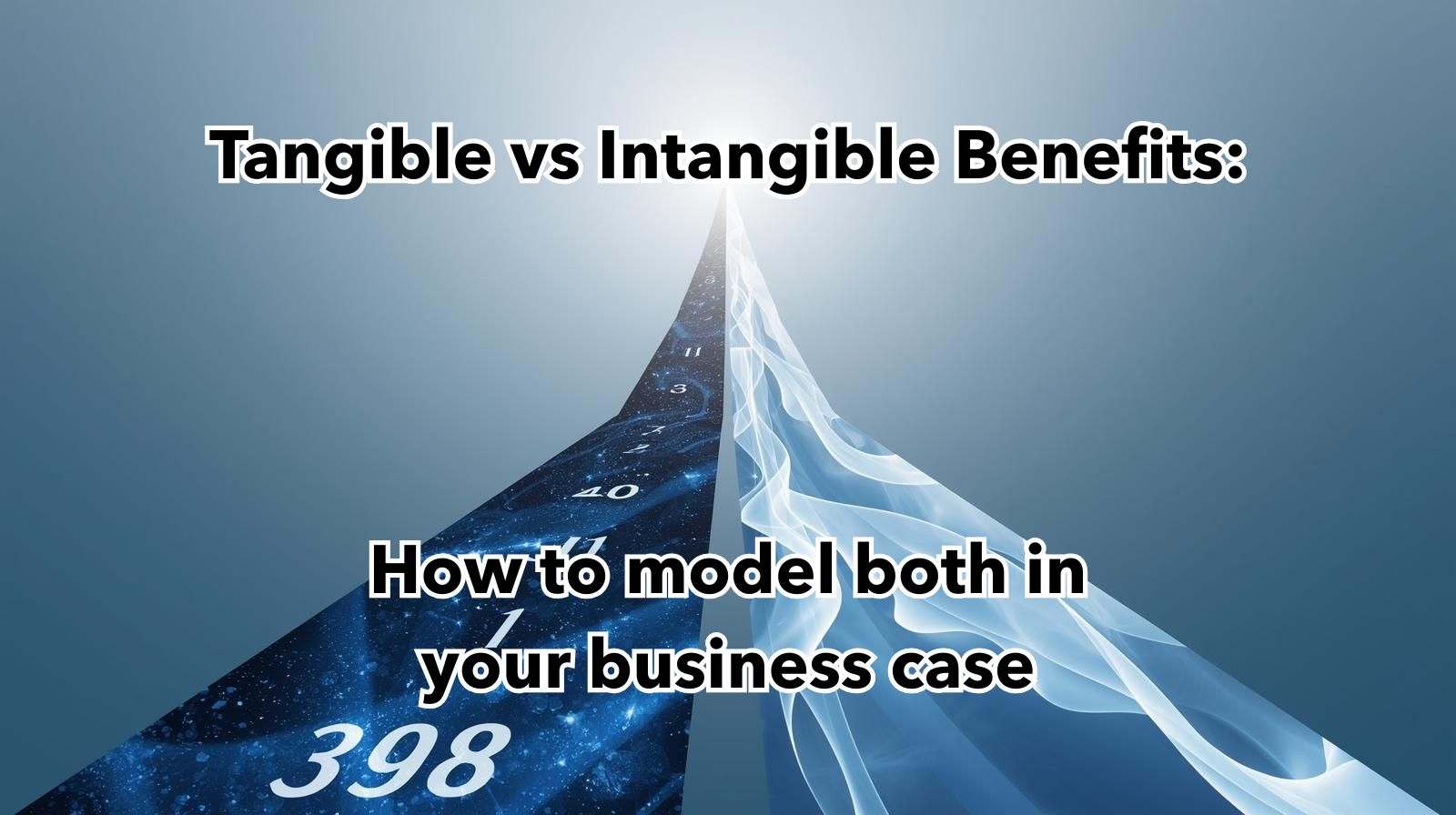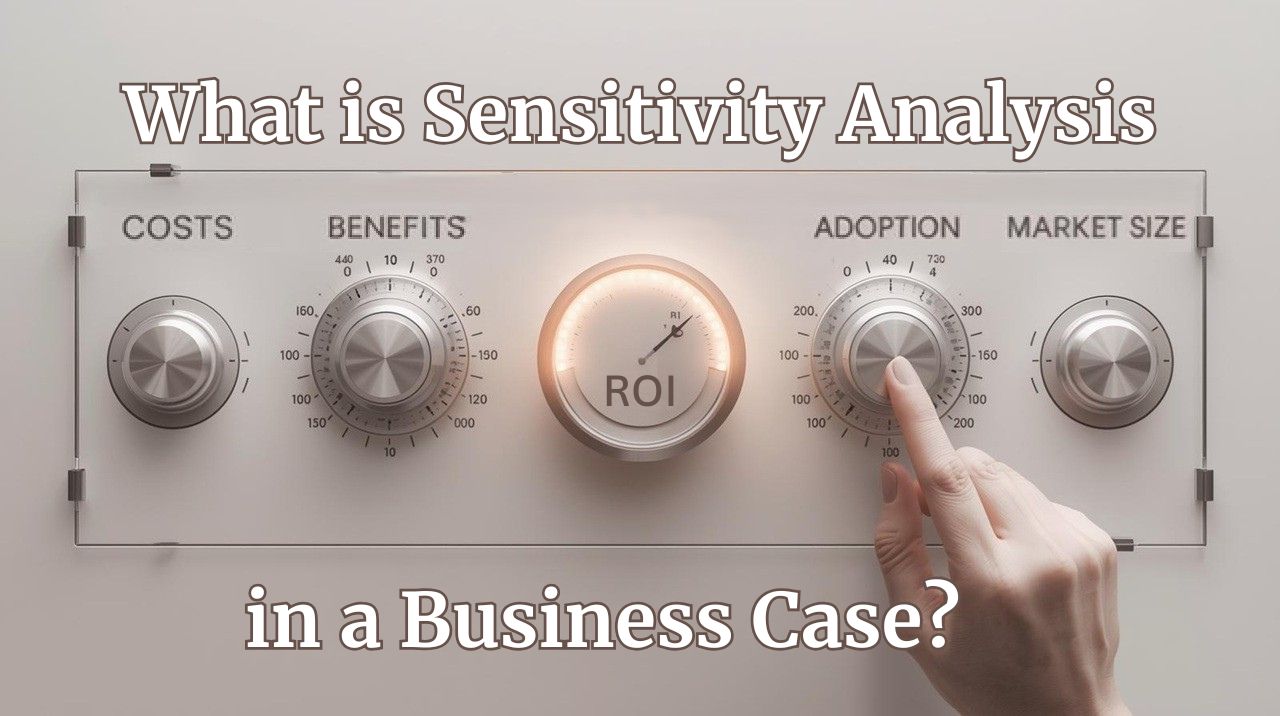No business case exists in a vacuum; assumptions change, markets shift, and project variables rarely follow a straight line. That’s why scenario modeling is such an essential tool for decision-makers, because instead of presenting a single rigid forecast, scenarios give stakeholders a way to see a range of possible outcomes and make more confident, informed choices.
Imagine two business cases being presented for the same upcoming key initiative; one version presents a single ROI forecast: 32 percent, the other shows three scenarios: a base case of 28 percent, a best case of 45 percent, and a worst case of 12 percent. Which case would you trust more? Most leaders prefer the second, because it acknowledges uncertainty and prepares for alternatives. That’s the real power of scenario modeling.
In this blog, we’ll break down what scenario modeling means in the context of business cases, why it matters, and how you can do it effectively.
What is scenario modeling?
Scenario modeling is the practice of building and comparing multiple versions of a business case, by changing key assumptions. Each version (or “scenario”) shows how the projected ROI, costs, benefits, and risks might shift under different conditions. Typical examples include:
➕ Best case: Everything goes to plan with faster adoption, lower costs, and higher benefits
🟰 Base case: The most realistic outcome, grounded in reasonable assumptions
➖ Worst case: Risks materialize, adoption is slower, or costs are higher than expected
However, that’s just the beginning, as they can also be used to test strategic options, such as:
📶 Phased vs full rollout: Does a staged approach deliver quicker payback, even if benefits ramp more slowly?
🆚 Vendor A vs Vendor B: How do costs, risks, and long-term returns compare?
⏱️ Delay vs go now: Does waiting six months for market stability improve or reduce ROI?
Scenarios can also be quantitative (changing hard numbers like cost estimates) or qualitative (comparing approaches like insourcing vs outsourcing). Some organizations even use probabilistic scenarios, assigning likelihoods to outcomes to generate a range or “cone of uncertainty.”
Why scenarios matter
Scenarios help strengthen your business case in three important ways:
🤔 Highlighting uncertainty
Every business case rests on assumptions, and if those assumptions turn out differently, then so will the results. Scenario modeling doesn’t hide this; instead, it makes uncertainty explicit. For example, if user adoption could vary between 40 percent and 80 percent in year one, that difference may shift payback by several years. Calling this out in a scenario provides decision-makers with a clearer view of what’s at stake.
💪 Supporting better decisions
Leaders rarely approve projects just on the “most likely” outcome, as they want to understand the risk-reward balance, and scenarios make that possible. Seeing that a best case delivers a 45 percent ROI, while the worst case still breaks even, is often enough to move a project forward. Conversely, if the downside is severe, it may prompt a rethink before costly mistakes are made.
🤝 Building trust
A single forecast can look like wishful thinking, whereas multiple scenarios show that you’ve done the hard work of testing alternatives. This transparency builds credibility with boards, CFOs, and sponsors as it signals that you’re not hiding risks or over-promising benefits. In many organizations, that trust can be the difference between getting approval or not.
How to model scenarios step by step
The process of scenario modeling doesn’t need to be complex; a structured approach will ensure that your scenarios are meaningful rather than arbitrary.
🔍 Identify the key variables
Start by asking: in this specific business case, which factors have the greatest impact on ROI? These usually include:
Adoption and benefit realization rates
Project delivery costs
Timing of benefit ramp-up
Risk probabilities and impacts
Not every input needs to change though; instead, focus on the handful of drivers that matter most. For example, adjusting travel costs by 5 percent likely won’t shift the outcome too much, but changing the adoption rate by 20 percent might alter the entire business case.
✏️ Define the scenarios
Decide which situations you want to test. The base, best, and worst cases provide a solid foundation, but you should also consider strategic alternatives. For instance, if you are evaluating a new system rollout, your scenarios might include:
Full rollout, fast adoption
Phased rollout, moderate adoption
Outsourced delivery with lower internal costs
Status quo with no change
This ensures scenarios reflect real choices, not just hypothetical math.
🧮 Apply consistent logic
Scenarios should be coherent, not just a random mix of numbers. For example, if adoption is slower in a worst-case scenario, it may also mean that training costs are higher or support needs increase. Always check for internal consistency, as a common mistake is tweaking one assumption in isolation, which, as a result, produces unrealistic or misleading outcomes.
⚖️ Compare outcomes side by side
The value of scenarios comes from comparison, therefore present them together so that stakeholders can easily see how ROI, payback, and risks differ. Often visuals can really help here; tables, waterfall charts, or ROI range bands can all make the differences more tangible. Also, instead of burying scenarios deep in an appendix, bring them into the main story of your business case.
🗣️ Stress-test decisions
Finally, use scenarios to spark discussion by asking such things as:
Would we still proceed if the worst case occurred?
Is the upside in the best case worth the risk?
Do alternative scenarios suggest a better path forward?
Often, these conversations reveal hidden assumptions or surface issues that might otherwise be missed, so the act of stress-testing is where much of the real decision-making value lies.
Bringing it to life with KangaROI
Scenario modeling is built into KangaROI, making it easy to explore alternatives without duplicating effort. With KangaROI you can:
⿻ Create multiple versions of your business case with a few simple clicks
🧐 Capture and display assumptions clearly so stakeholders see what drives each scenario
⚖️ Compare cases side by side with consistent visuals
📈 Combine scenarios with benefit ramping and risk-adjusted ROI, for richer insight
Scenarios in KangaROI aren’t an afterthought; they are woven into the workflow of business case creation and review, meaning less spreadsheet wrangling, more transparency, and smarter decisions.

The bottom line
Scenario modeling isn’t about predicting the future, instead it’s about preparing for it. By building and comparing different versions of your business case, you reduce blind spots, anticipate trade-offs, and give stakeholders the confidence to move forward.
The best business cases don’t just argue for a single path, they show decision-makers how different futures might unfold and help them choose wisely.





